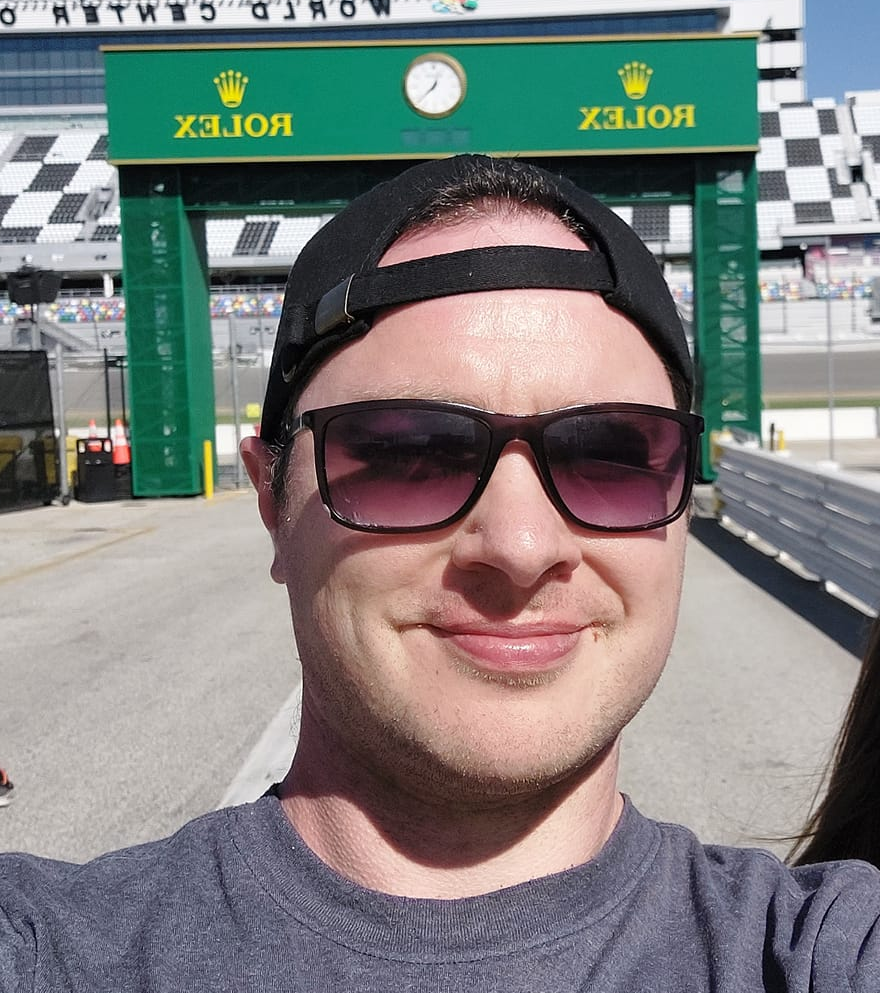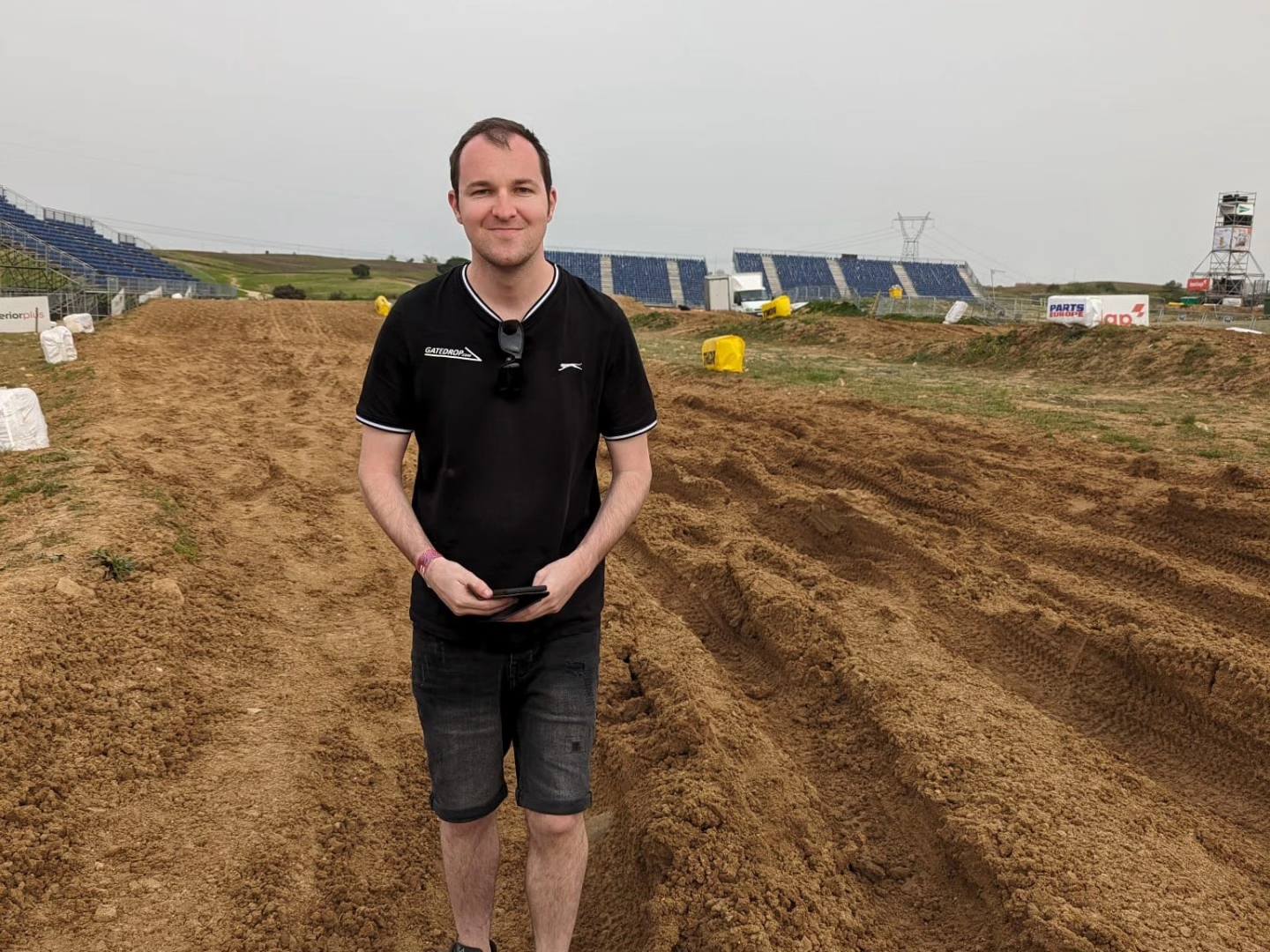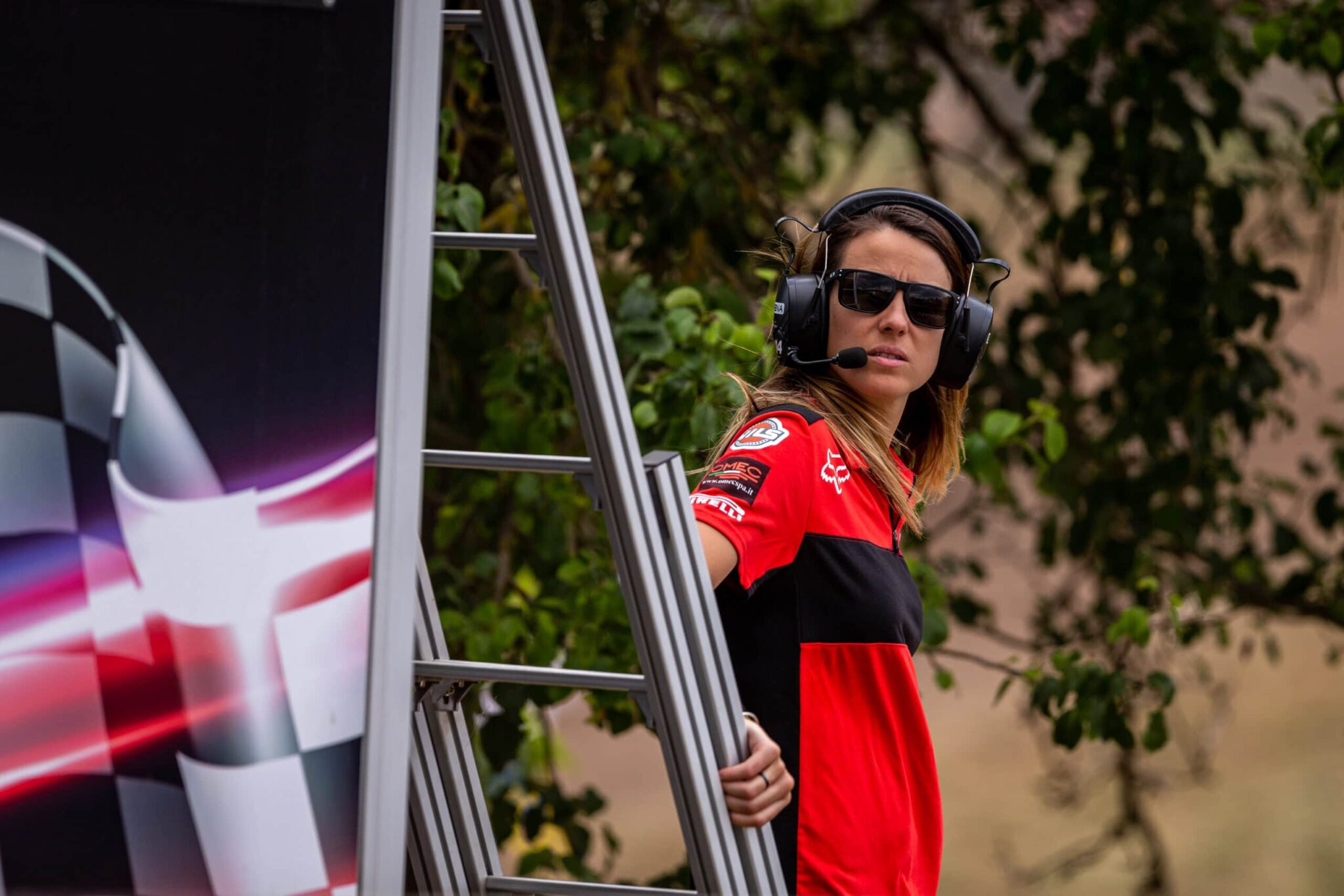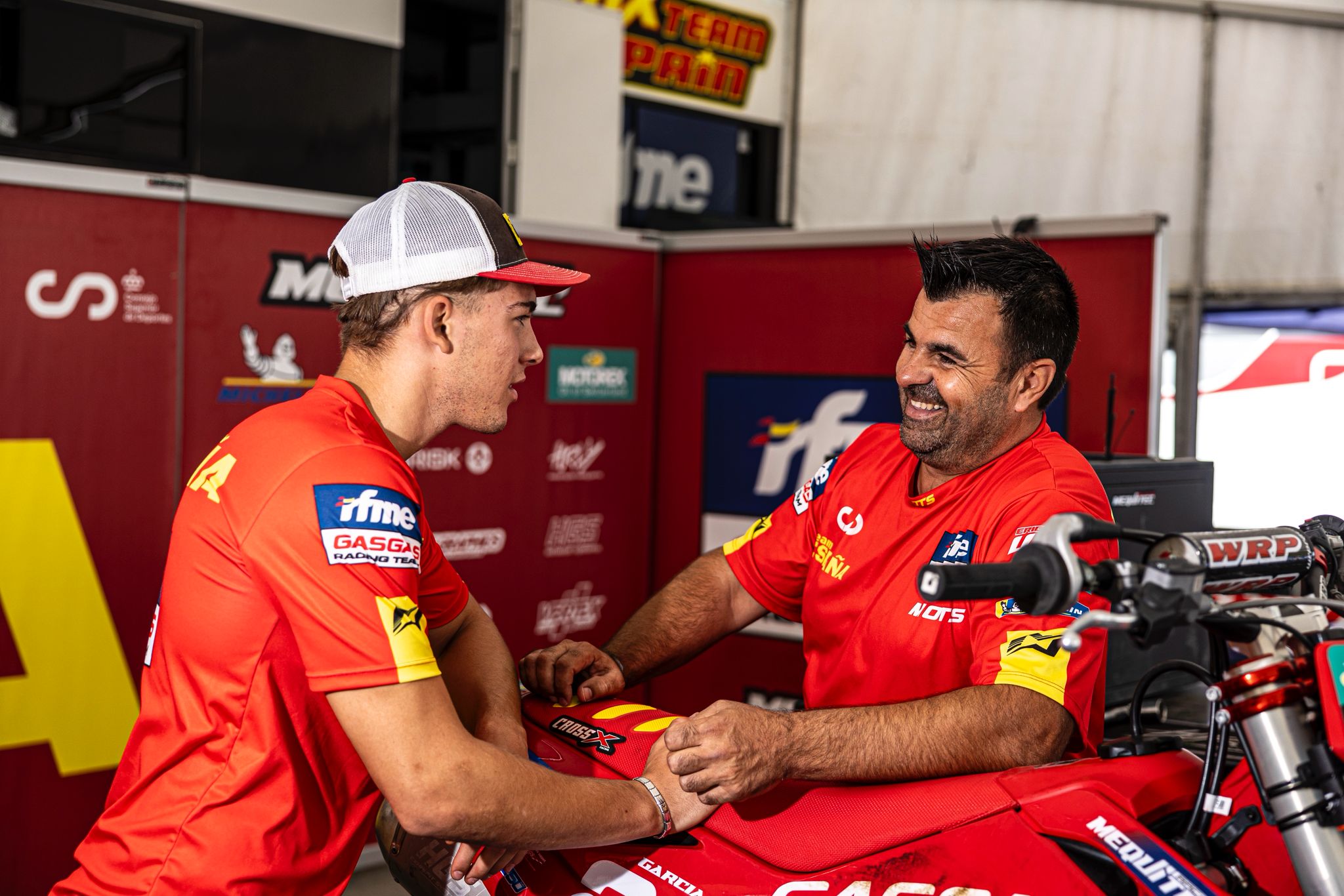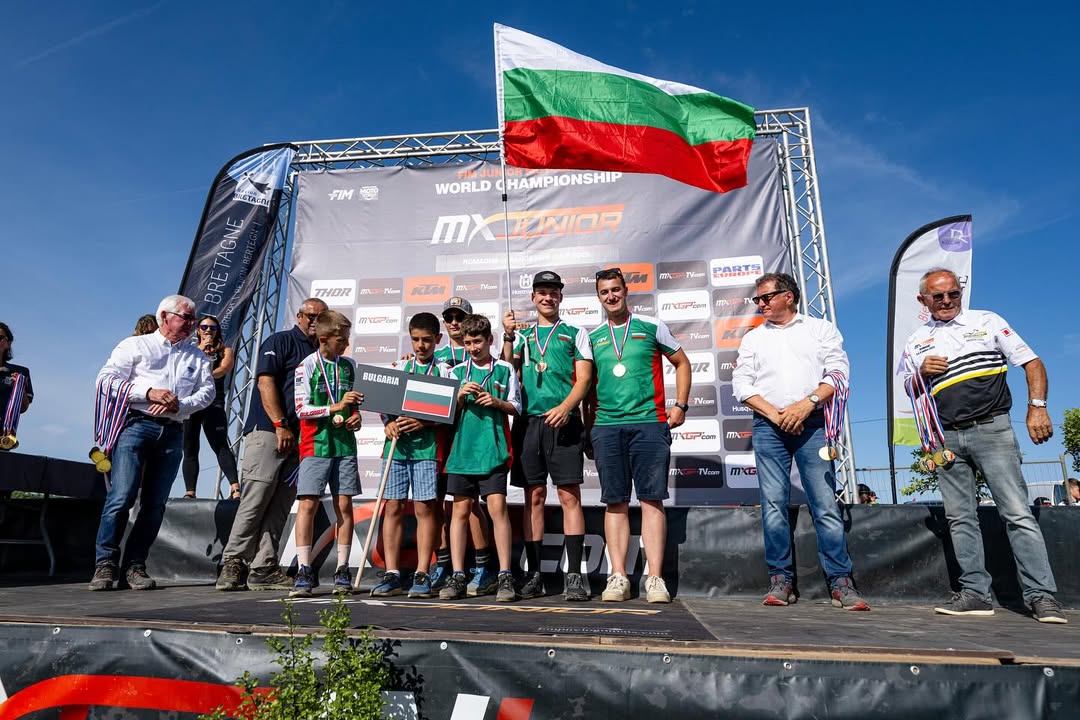A world champion turned team owner, Jacky Martens remains one of the most respected figures in the MXGP paddock. After decades in the sport, his passion and commitment haven’t faded—in fact, they seem stronger than ever. Running the JM Honda Racing team with a satellite structure and a tightly managed budget, Martens continues to guide promising talents like Noel Zanocz and David Braceras, all while navigating the growing challenges of modern motocross.
In this interview with DailyMotocross.fr/Kevin Frelaud, the Belgian opens up about the team’s progress, the evolving factory-satellite dynamic, rising costs, and the future of the sport—including his take on electric motocross and the struggles of staying competitive without full factory backing. As always, Martens is honest and focused on the long game.
Jacky, what’s the assessment for this first half of the season? Noel Zanocz is a rookie in EMX250 and already making podiums. David Braceras seems capable of targeting the top 10 in MX2. It’s been a bit more complicated with Brent and his new injury.
Martens: Things are going really well with Noel. He’s adjusting to the 250 4-stroke like any rider coming from the 125cc class. Right now, he’s progressing step by step. He’s struggling a bit with starts. At least he got a holeshot in the first moto in Lugo, but it was restarted after the red flag. From there, he started second. Everything is going according to plan with him, and we’re already working on something long-term.
As for David, things are going pretty well. Last year, he had a lot of DNFs and hasn’t spent much time on the bike lately. This year he’s with us, and he’s doing a good job. He’s hovering around the top 10, which is a good sign. He got a fourth-place moto in Argentina, but MX2 is a very stacked class—you can be 12th in one moto and 8th in the next without changing anything. It’s a challenge. During free practice in Lugo, he had a really big crash and a part of his lever got embedded in his arm; he couldn’t line up for the qualifying race, but he did race on Sunday. He finished 18th overall, but at least he rode, and that’s what matters. He’s in the right mindset.
Brent has been with us for three years now. The first year, he fractured his hip. Last year, it was his femur, and he got injured again this year, same bone. He had a good first moto this weekend, finishing 9th. In these kinds of conditions, you really need your legs. Coming back from that kind of injury and going straight into the top 10 is very positive. I hope we can keep building on that, but for now, I’m satisfied.
We’re not a factory team, but we still want to have the best riders possible, to help them progress and be up front. Factory teams are factory teams. We’re a satellite team; we do our best to provide the best possible bike with our budget so our riders can have top-level equipment and get results. We’re achieving that with Brent, David, and Noel. We’re battling with factory teams, so that’s a good thing.
You’ve managed factory teams in the past. Is the gap between factory and satellite/private teams growing year after year?
Martens: The biggest difference is that factory teams have the budget to sign the best riders. That’s already a huge advantage—it’s just how it works. I take a lot of pleasure working with my structure and my riders; we have a good team and one of the best bikes. Our bike performs well, and we’re getting the results we’re looking for. I still enjoy it every single day, and that’s the most important thing for me.
What’s the biggest challenge you face as a team owner?
Martens: I’d love to be a factory-supported team again, like in the past. But for now, there’s no opportunity. If we could get more support, we’d be able to sign a really strong rider, and that would be a big step forward for the team.
Everything is getting more and more expensive these days. Thankfully, we have loyal sponsors who’ve been with us for years—around 80 of them. They give us a budget, and with that, we can run the team. When you start off with a top-level rider, everything gets easier.
Triumph is entering with a 450 next year, and Ducati already opened up two spots this season. More factory seats mean more opportunities for riders. But as a satellite team, does it also mean more difficulty for you when it comes to signing riders?
Martens: Yes, and that’s what makes our job as a satellite team even harder. There are also fewer and fewer young riders coming through. Motocross has become too expensive. For young riders and amateurs, it’s harder to develop and make a name for themselves. The level has plateaued and every year, we lose a few riders. But we still believe in it.
If you look at the current top 10 riders in the world, many of them came through our team: Coldenhoff, Jonass, Febvre, etc. I still have great relationships with them, and we respect each other.

The goal is to get the best rider possible, but a non-factory rider performing well is likely to be signed by a factory team—back to square one, right? It’s a never-ending cycle?
Martens: That’s how it goes. I’ve been running a team for 37 years, and it happens every year. We had Camden McLellan in 2023, and then he got an offer from Triumph and left. We parted ways on good terms. We ended his contract so he could move on. Same thing with Romain Febvre back in the day. No hard feelings there.
I’m curious what you think about the upcoming E-MXGP class expected around 2026, considering your background in the sport. Do you think this is the future of motocross?
Martens: I don’t think we can stop progress. A lot of people criticize it and try to block the development of electric bikes, but I think we need it. It’s the future, and if we don’t support progress, our sport will die. For now, the technology isn’t ready for motocross—the battery doesn’t last long enough. After four laps in Lommel, it’s over. I also think we’re not in the same situation as electric F1. I believe motorcycles have more potential.
In Europe, we have to deal with environmentalists, and if we ignore them, our sport won’t go very far. If we try to move in their direction too, it might be different. Time will tell. I don’t know if fans really want to see that kind of racing—that’s the issue in Formula 1 as well. We reduced the noise level from 113 dB to 109/110 dB, but for spectators, it doesn’t change much. They still hear the bikes and feel their power—sound is part of the sport. If they don’t hear anything, the atmosphere will be totally different and it might be more worth it to go watch a bicycle race.
Once electric technology evolves, we might eventually get something out of it. Maybe a class that’s worth it will emerge. Personally, I think the future lies in hybrids, similar to what we see in cars. Right now, bikes are too fast. We could create an intermediate class with electric bikes. We’re already seeing 250s and 450s posting the same lap times. I think there’s room for a lower-tier class with lower speeds, smaller hybrid engines, different tires, etc. I don’t know what the future of the sport will look like—these are just assumptions.
Were people as divided when the switch happened from 2-stroke to 4-stroke?
Martens: No, not really. At the time, 2-strokes had become too aggressive, and the bikes were extremely powerful. Then there were the environmental concerns, which didn’t help. Honda stopped producing 2-strokes, then Kawasaki, and eventually everyone followed. In the end, we had to switch to 4-strokes—they were the “cleaner” engine option.

Are you one of those people who say motocross was better back in the day?
Martens: No. It’s just different. It’s evolved a lot, especially today. Now we talk about fuel injection, traction control—new tech, and that’s a good thing. What was nice back then, especially with 2-strokes, was that you had to work more on the mechanical side to get a really performant bike, but also a bike you could manage and feel comfortable with. Today, it’s all about computers and electronics. So yes, it’s different—but not worse.
Since your days racing the world championship, has the series evolved in the right direction?
Martens: I think so. Today, budgets are much bigger than what we had back then. With Giuseppe Luongo, I think we’ve gone in the right direction. That said, it’s getting really complicated now. Everything is more expensive, there are more FIM rules on bikes, some GPs are cancelled and replaced—like Finland, for example. Those are unexpected costs. We have to set our budget in October and work with what we have. Once the budget is locked in, it’s hard to deal with last-minute changes. I understand it’s not easy for [Infront Moto Racing] either. But sticking to the plan would make things a lot easier for everyone.
If you could change one thing, what would it be?
Martens: I don’t really know how [Infront Moto Racing] operates. Everyone always talks about prize money. I think we need better support to bring more sponsors to the races. Today, we’re limited to three invitations. Back in the day, that was enough—we had three main sponsors. Now we have many more, and we can’t invite them to the events. We have to use part of the budget they give us to pay for their entry. But we need that budget to run the team. Being able to bring our sponsors along should be the minimum. So yes, we all end up talking about finances. Again, I don’t know how the championship promotion is managed, but for example, when we go to overseas GPs, our travel costs should be covered. In Europe, we can manage if we have a clear, pre-established calendar. Every year, all the teams try to grow and rebrand to get better budgets and a better image. That’s what we do as well. We’re becoming more professional. We have to plan our expenses in advance, and once we do, we want to stick to our budget. I’m lucky to have a lot of sponsors, which gives us some flexibility—but we’d like to invite those sponsors more easily.
You’ve been a rider, a world champion, and now a team owner. Do you still feel the same adrenaline?
Martens: Yes, the same. What’s really different today is that there are far fewer mechanics in the paddock. Back then, when you needed a mechanic, you had choices. Now it’s more complicated—they don’t have the same experience as mechanics from the past who worked on all kinds of bikes and learned the trade. But that’s the same story in every area of business today; it’s tough for everyone.
So you’re not surprised to see teams shutting down season after season? Recently we saw F&H, Standing Construct, Schmicker…
Martens: Let’s just say I’m not the kind of person to complain or criticize. I want to solve problems, help, find solutions. As long as we’re surviving, I’m good with it. The day we can’t anymore, we’ll stop like the others.
Let’s talk numbers—what’s the budget for a team like JM Honda Racing for the year?
Martens: €800K, for 20 GPs and the European rounds. That’s the budget we need to compete at the level of factory teams, without factory support. It’s the minimum needed to pay our riders and cover all expenses for the season.
If you could relive one race in your career, which one would it be?
Martens: That’s a tough one. I’d say Goldbach, Germany, in the ’90s. I battled against Eric Geboers, Dave Thorpe, Kurt Nicoll and others, and I won with quite a big lead that day.

